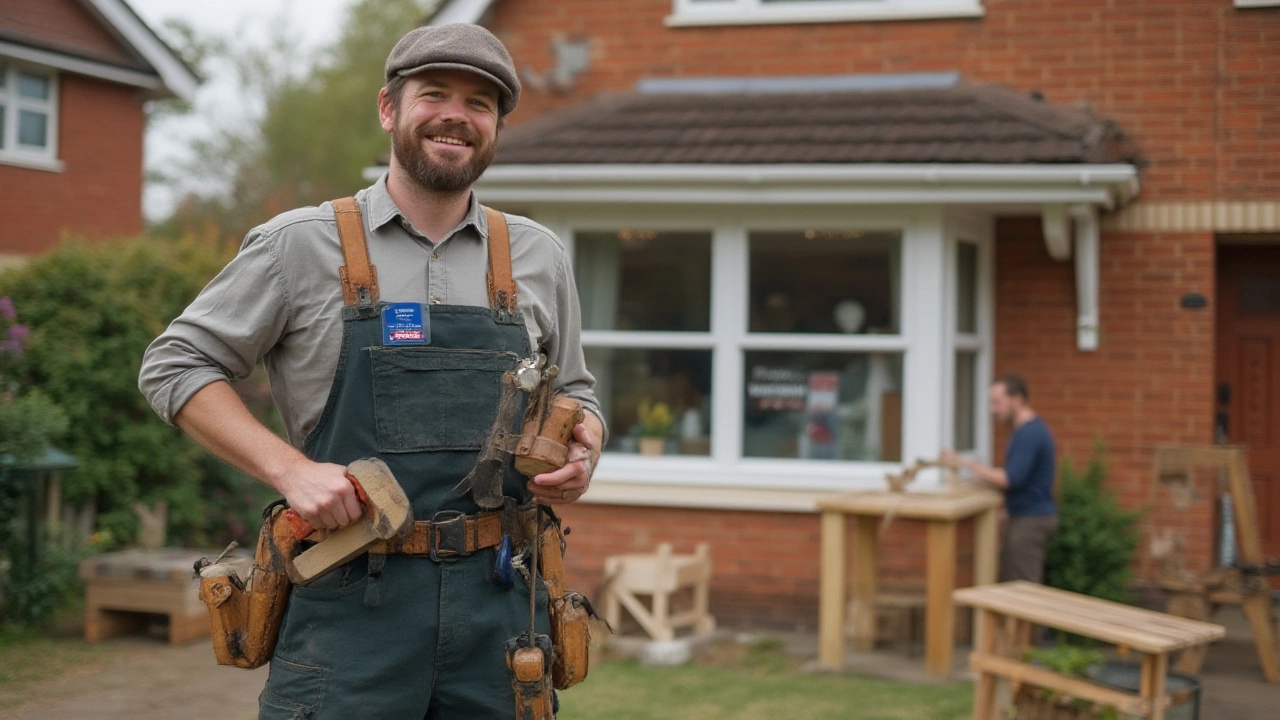Someone out there right now just built a coffee table that looks incredible—out of construction-site scraps and a hand-me-down power drill. Here’s the honest truth: most people don’t care if you’re a master carpenter when they need a shelf installed or a fence fixed, and a surprising number are searching for someone to do the job reasonably and right away. As a beginner, you might think you need years of training before you can earn real money, but that’s not actually the case. In 2024, the average self-employed carpenter in the UK was making close to £29,000 per year—many starting just where you are: at square one, with basic tools and a motivation to get things done.
Essential Tools and Skills to Start Making Money in Carpentry
Before you pick up your first job, it helps to know you don’t need a whole workshop of expensive tools cluttering your flat or van. Most working carpenters use the same twelve to fifteen tools all week. Here’s what you should have: a tape measure, claw hammer, cordless drill, hand saw, spirit level, square, utility knife, chisel set, and maybe a sandpaper block. Seriously, you can build almost anything people want fixed, made, or replaced with just these.
Of course, you should have a basic knowledge of how to use each tool safely. Loading up YouTube videos or checking out free tutorials online is probably the quickest way to get hands-on learning. And with a little practice, you’ll look at odd jobs—think hanging curtains or fixing door frames—and realize you’re more prepared than you thought. If you want to take it further, local colleges offer evening courses in introductory carpentry that cost under £200. Pick up some work for friends or family (even unpaid at first) to build your skills and confidence.
One skill most beginners overlook is actually measuring up and cutting things straight. Nearly half the repair blunders you’ll fix down the road will come from someone not measuring twice before cutting or drilling once. Invest time in practicing your measuring, marking, and cutting, since these basics are the difference between a professional-looking job and an "almost" result.
Finding Your First Carpentry Jobs: Where Beginners Have the Best Luck
Word of mouth is still king. You could spend days uploading photos to Instagram or making flyers, but your first jobs usually come from neighbors, friends, or relatives who trust you enough to pay for your time. Start by letting people know you’re available. Post a note on local Facebook groups or WhatsApp chats, but make it personal: "Hey, I’m just starting up as a carpenter. If you need a small job done—shelving, fixing squeaky beds, even assembling flat packs—send me a message." Simple honesty works.
People underestimate the power of community bulletin boards and nearby hardware stores. Ask if you can pin a flyer or leave a card—hand-written signs often get more calls than shiny printed ones. Car boot sales and local events are also busy places to hand out free advice and chat about odd jobs people have at home. People remember the helpful, friendly person far more than slick sales talk.
If you prefer going digital, websites like TaskRabbit, Checkatrade, or even Facebook Marketplace have entire categories devoted to home repairs and furniture assembly. These sites let you list your availability and pick up jobs around your postcode. The vetting process is a little strict—expect to upload proof of ID and do a basic background check—but that just makes you more trustworthy in your customers' eyes.
Don't ignore the humble business card—hand out a few every day, even to folks who seem unlikely clients. More often than not, your first paying work comes from someone’s cousin who overheard you at the park or local pub. When starting out, any job is a good job. You’ll build your reputation with every bit of furniture fixed or shelf made straight.

Pricing Your Work: How to Charge and Actually Get Paid
The toughest part for most starting carpenters isn’t the work—it’s figuring out what to charge. You don’t want to scare people away by asking too much, but you don’t want to undervalue your time either. The sweet spot is somewhere between the cost of your materials, a fair hourly rate (think £15–£25/hour when starting out), and a flat fee for simple jobs.
Here’s a trick that works well: offer a menu of prices for common jobs—assembling flat-pack furniture, putting up shelves, patching holes, or fitting a new door handle. Most customers like knowing up front what they’ll pay. For bigger projects, like making custom storage or building a garden bench, estimate how many hours you’ll need (add 25% more to whatever pops into your head—first timers always underestimate), then quote a price including both materials and your time. Be transparent if you’re learning. Most people are patient with a hard worker who’s honest about being new.
Don’t forget to track your expenses. Even basic jobs add up: screws, sandpaper, travel costs if you don’t have a van. If you’re using your own materials, keep receipts and factor them into your prices. When you turn professional, this stuff will matter for taxes and legal purposes.
When someone’s happy with your work, ask for a simple testimonial or text review. These build trust way more than fancy websites or portfolios, especially when you’re just starting out. Never be shy about politely reminding a client to pay you at the end of a job—lots of beginners lose money by being too hesitant to ask for what they’ve earned.
Levelling Up: Moving From Odd Jobs to Real Income
After a few months, you’ll notice the small jobs become bigger and the requests start to feel familiar. This is the moment where lots of folks quit—thinking they’ll never make "real money" as a carpenter. But here’s something cool: in 2024, over 60% of carpenters in the UK work for themselves, picking only the jobs they want. Once you get comfortable with basic repairs, it’s time to think bigger.
Real money comes from learning to specialize. Maybe you love building outdoor furniture or you’re great with storage solutions in tiny flats. Start taking photos of your best work. Put those on a basic website or a free Instagram account. Don’t spend hundreds on branding or marketing. When a client asks, "Can I see what you’ve done before?" just send them your photos.
If you want to jump ahead, look into carpentry qualifications like the NVQ Level 2 Diploma in Carpentry and Joinery. These aren’t required for most handyman jobs but open doors for insurance and bigger contracts down the line. Getting certified also shows clients you’re serious, not just dabbling.
Networking with other tradespeople—painters, electricians, plumbers—means more job referrals for everyone. If you can recommend a friend for a bathroom refit, they’ll probably send you carpentry work next month. Small partnerships often snowball into steady work.
A lot of beginners don’t realize how much money people will pay for custom work. Simple floating shelves or made-to-fit wardrobes can go for hundreds, even from unbranded, local carpenters. The trick is to build trust, show up when you say, and deliver what you promise. Most customers care far more about reliability than flawless craftsmanship at the start.
If you’re enjoying yourself, invest your first big profits in better tools, an upgraded van, or extra training. The only way up is steady progress and saying "yes" to slightly bigger challenges each time. Every experienced carpenter you know started somewhere—and probably made a wonky table or misshaped chair when they were first learning. The jobs get easier, the pay gets better, and before long, you’ll find you’re making a living from your own honest work. That’s all most of us really want: the freedom to work with our hands, make something real, and get paid fairly for it.





Write a comment